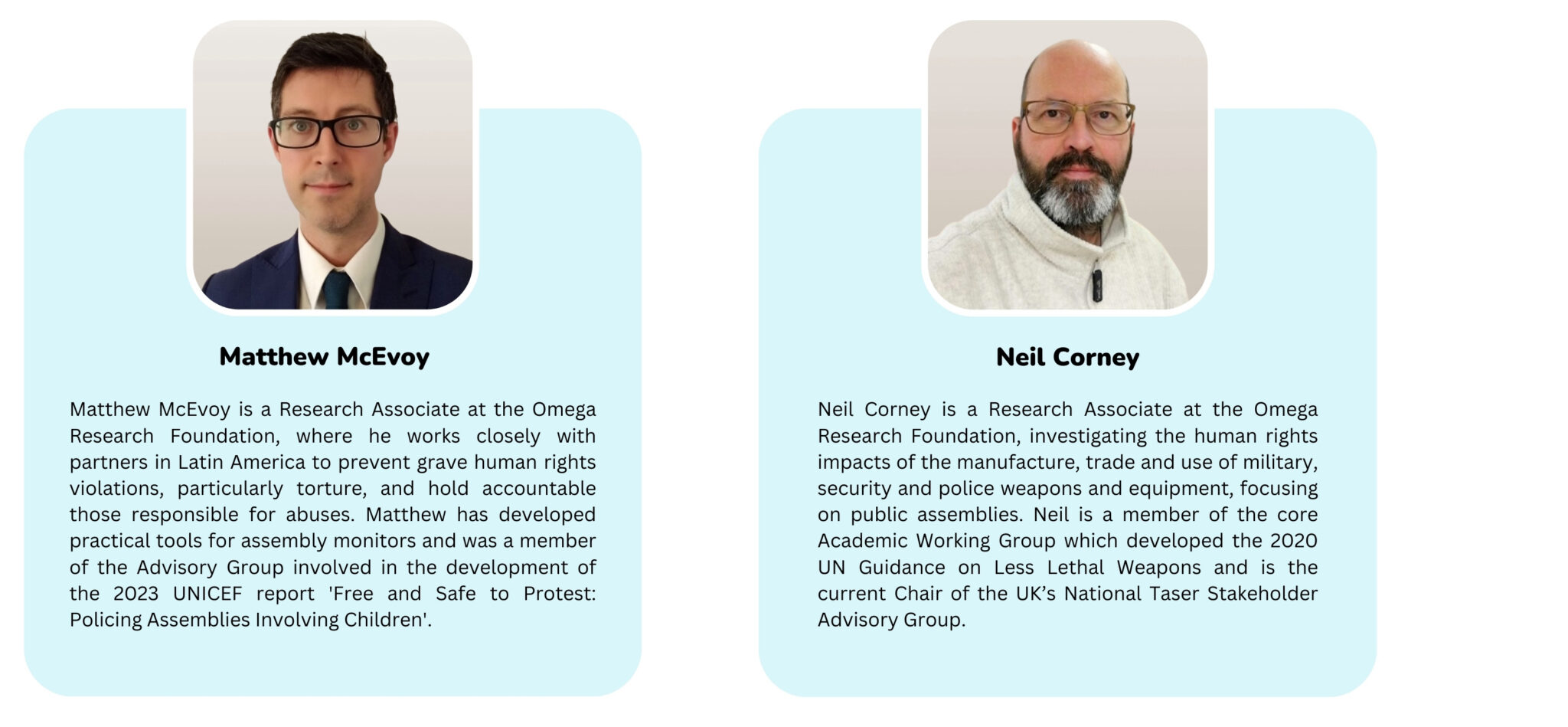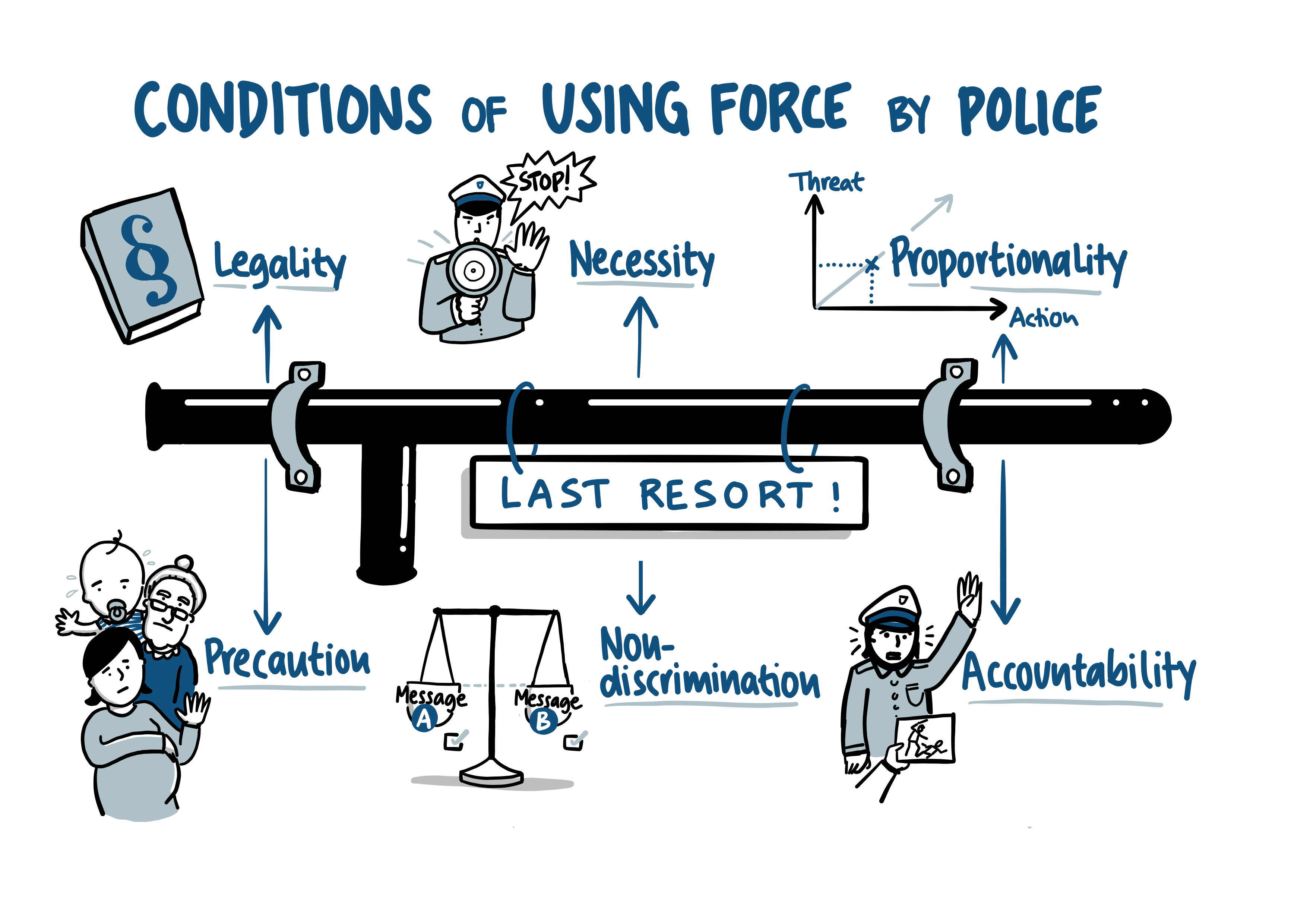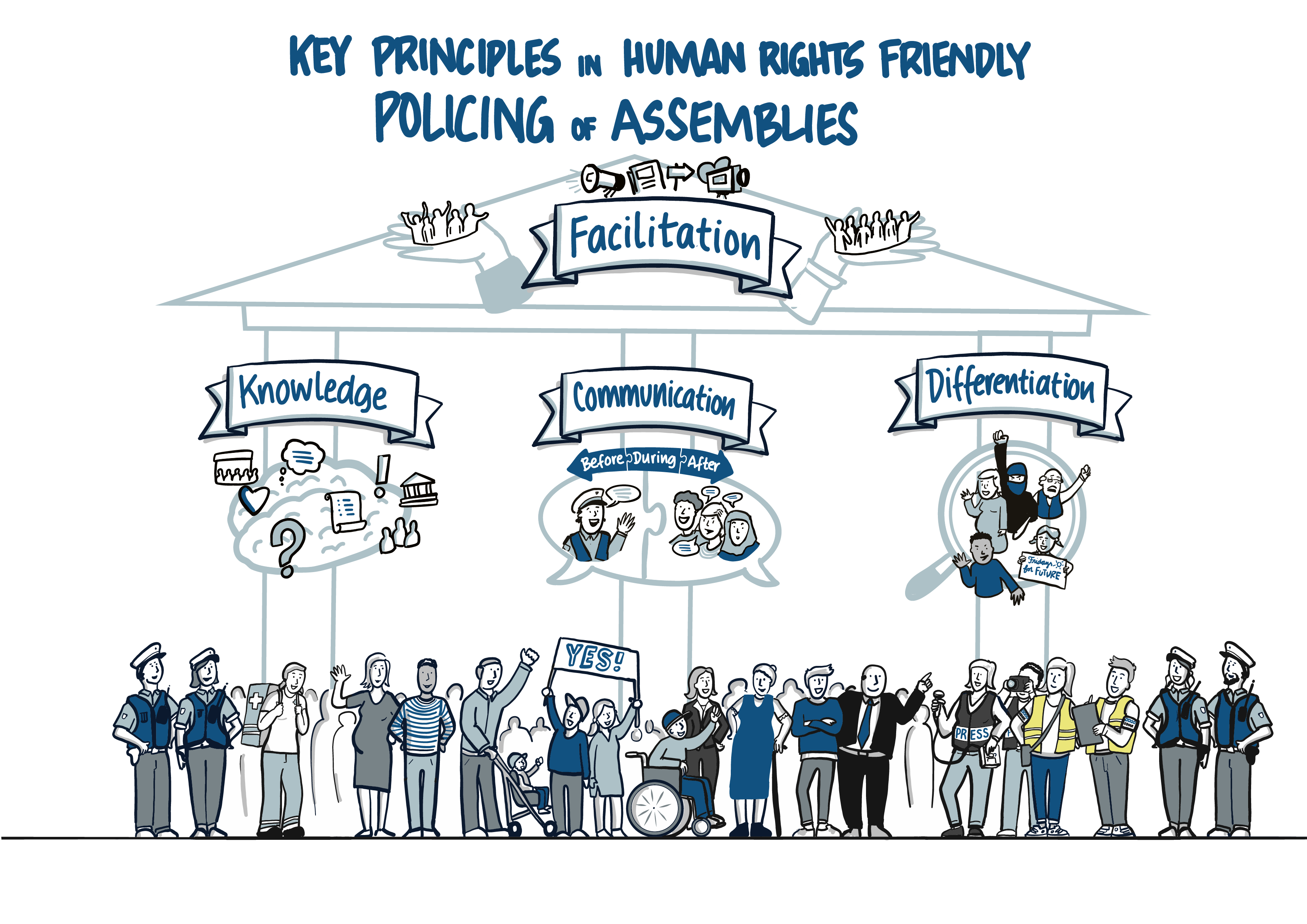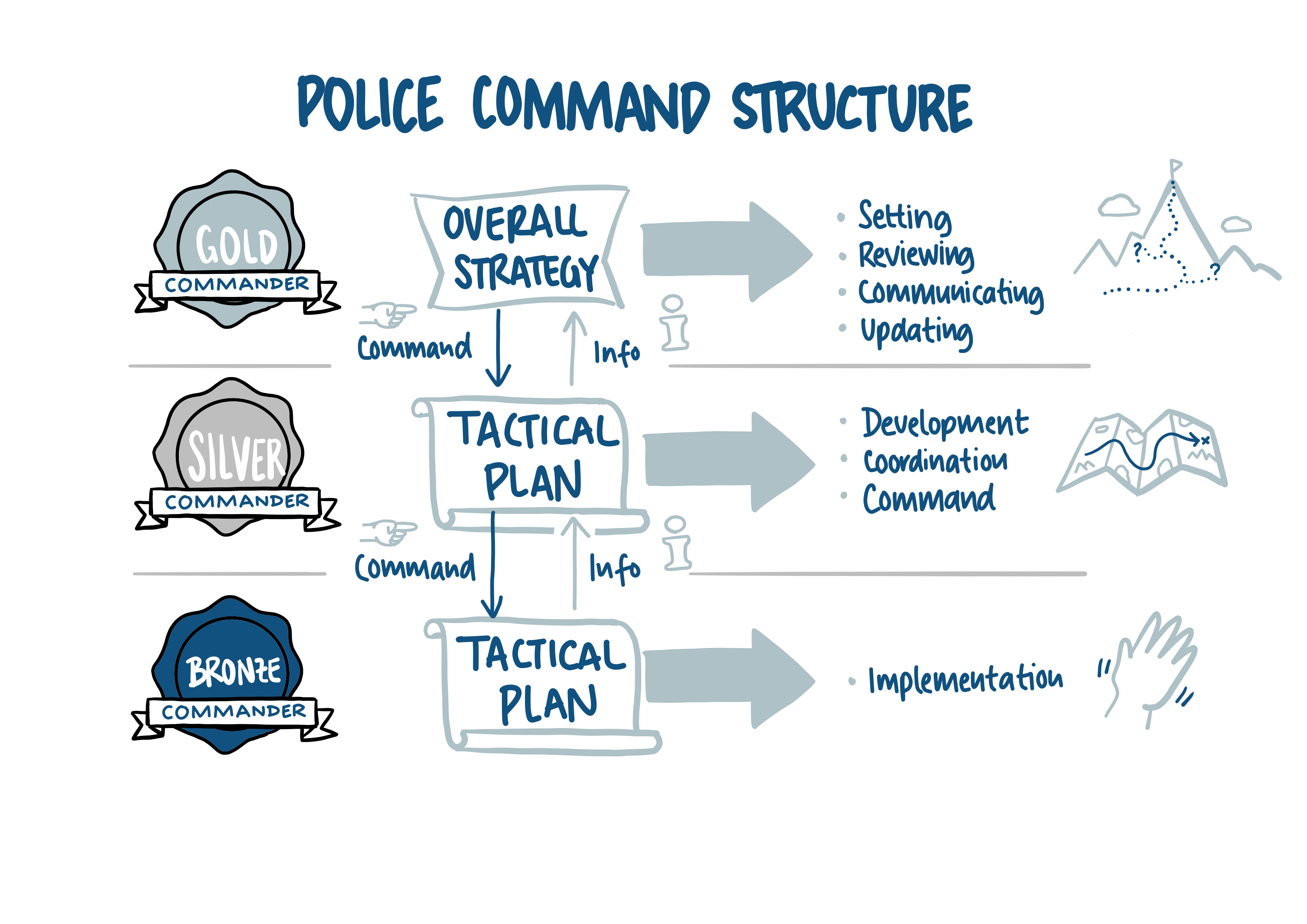Recommended resources:
● OSCE/ODIHR Handbook on Monitoring Freedom of Peaceful Assembly, Second Edition, “II.4. Policing of assemblies”.
● OSCE/ODIHR and Council of Europe Venice Commission, Guidelines on Freedom of Peaceful Assembly, Second Edition. Section B, Explanatory Notes: “6. Policing Public Assemblies”.
● OSCE/ODIHR Human Rights Handbook on Policing Assemblies
● OSCE/ODIHR Guide on Law Enforcement Equipment Most Commonly Used in the Policing of Assemblies
● OHCHR Guidance on Less-Lethal Weapons in Law Enforcement
● OHCHR, Basic Principles on the Use of Force and Firearms by Law Enforcement Officials
● Amnesty International, Use of Force: Guidelines for Implementation of the UN Basic Principles on the Use of Force and Firearms by Law Enforcement Officials (short version)
● Omega Research Foundation, Guide to taking photographs in the field
● Omega Research Foundation, Video on identifying equipment used by police and security forces
Handouts:










